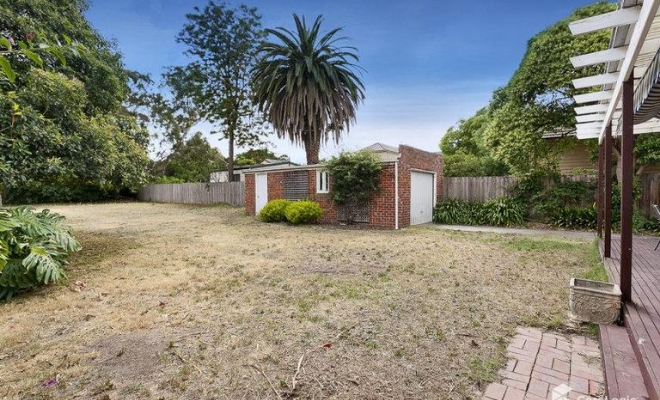
Property investment can open the door to a world of opportunities you may have never thought were possible. However, it's not all about leaping at the first option that catches your eye. In an Australian property market that’s constantly changing, evolving, and bringing new challenges, the pathway to tangible long-term success lies in the details.
Today, we’re going to shine a light on why every property investor should conduct a feasibility analysis before buying. Keep reading for a detailed breakdown!
At its core, a ‘feasibility study’ or a ‘feasibility analysis’ is an in-depth assessment of a property’s potential to meet your investment goals. This is one of the many specialised services on offer at Property Analytics.
As an investor, there’s no sense in holding back and not exploring the answers to any difficult/complex questions. These might be; What’s possible on the site? Should you build 2 large houses targeting families or 4 smaller townhouses targeted at young professionals? A comprehensive feasibility study identifies the most profitable design concept, all in reference to buyer demand and specifications.
Feasibilities spell out all of the costs involved, including but not limited to:
This study essentially arms you with clear, actionable insights to make sure that any decisions made are backed by solid data rather than speculation.

As an investor, your primary goal should always be capital appreciation or ‘capital growth’—that is, the increase in a property’s value over time. Whether you’re holding onto the property long-term or planning to develop it for a quick return, achieving meaningful capital growth is essential to building wealth through property.
The good news is that this can be measured as a metric or a percentage.
Here’s a quick example–let’s say a property was bought for $750,000 five years ago and is now valued at $900,000. This would represent a capital growth or appreciation of 20%.
There are two primary pathways to capital appreciation:
Let’s cover both below.
Did you know that Melbourne house prices have doubled 5 times in the past 40 years? This is a pretty staggering statement, but it really drives home both the notion and the importance of market growth.
Investing in the right market in the right location is one of the most reliable ways to achieve consistent capital growth. However, not all areas appreciate equally, and not all properties within those areas are created equal. We’ve seen this occur firsthand across the Greater Melbourne area.
Rounding up, the fundamental key to market growth is all about understanding the nuances of location, demand, and supply. This will ultimately allow you to select investments that are not only reliable, but outperform others on the market.
The principle of supply and demand lies at the heart of market-driven growth. One way to maximise returns is to focus on areas with high demand and limited supply. Properties in these areas naturally attract competition among buyers, driving up prices over time.
However, this doesn’t mean that your options are limited to the inner city or the traditional ‘blue chip’ suburbs. In fact, there are plenty of middle and outer ring suburbs with great potential for investment, particularly on the development side.
Due to population growth and other factors, much more investment is being put into building up what were once considered to be quieter suburban areas. There are also opportunities available in the recently built and developed suburbs on the city’s outskirts as well.
Access to amenities has always been a major driver of property value. Properties that are close to public transport, reputable schools, hospitals, and shopping centres are naturally going to be in demand. Because of these factors, they are also generally more likely to experience faster and more significant price growth.
For example, properties within walking distance of train stations or bus networks appeal to commuters, while those near sought-after schools attract families willing to pay a premium. Similarly, neighbourhoods offering lifestyle amenities—cafes, parks, and recreational facilities—are becoming increasingly popular, particularly among younger buyers and professionals.
It’s important to remember that buyers and renters prioritise convenience. Conducting a feasibility analysis will allow you to assess how the location aligns with these factors and whether the price reflects its growth potential.
Identifying high-growth opportunities in a constantly evolving market can be overwhelming, particularly for first-time investors. This is where working with a professional buyers’ advocate can make all the difference.
Buyers’ advocates bring deep market knowledge and data-driven insights to the table. They can help you identify properties in growth areas, negotiate on your behalf, and ensure that the investment aligns with your long-term goals.
At Property Analytics, our expertise lies in pinpointing profitable opportunities and guiding investors to make well-informed, confident decisions. With access to market data, forecasting tools, and years of experience, a buyers’ advocate ensures you’re buying not just any property—but the right property.
Renovations and development both offer excellent opportunities to actively accelerate capital appreciation. Unlike passive market growth, this pathway allows you to directly add value to a property, often in a much shorter timeframe.
However, as we’ll cover below, you’ll definitely need to do your due process before jumping into either option.
If well planned and executed, renovations can certainly transform an underperforming property into a high-value asset. Whether you’re undertaking minor cosmetic improvements—such as fresh paint, new flooring, and a new kitchen layout—or tackling more extensive renovations, every improvement brings the opportunity to add value–both in the eyes of renters and future buyers.
For example, there may be an investment opportunity in a prime location, but in its present state, its full value could be underrepresented. With a well-planned renovation, you can modernise the property, attracting a higher calibre of tenant and increasing rental yields.
Development projects, such as subdivisions or townhouse builds, have the potential to yield even higher profits. This is undoubtedly a circumstance where you will need to get a feasibility study completed.
Ready to get your own feasibility study report in Melbourne? Reach out to us today!
The success of any renovation or development project hinges on what’s actually achievable under local zoning laws and council regulations. A property may look perfect on the surface, but without the right planning permits or zoning allowances, your development goals could come to a grinding halt.
Before purchasing a property for renovation or redevelopment, it’s essential to conduct thorough due diligence. This includes:
Skipping this step can be costly, leading to unforeseen delays, fines, or unworkable projects. This is why it's so valuable to partner with a planning permit consultant. Check out our recent article or contact us directly to take advantage of our council planning permits services in Melbourne.
Data is the backbone of any successful renovation or development project. By analysing market trends, comparable sales, and buyer demand, you can determine which improvements will deliver the best return on investment.
In Melbourne’s outer-ring suburbs, for example, demand for townhouses has surged in recent years due to their affordability and broad appeal to first-home buyers and downsizers. Understanding this trend also allows investors to confidently pursue development opportunities that align with market demand.
At Property Analytics, we provide in-depth market research and project feasibility assessments to help investors navigate these often complex decisions.

Property development is not a process to be taken lightly. Serious consideration must be given to mitigate risk and maximise your return on investment. Before you leap into the development market, remember these key points.
Consider Your Financial Position: Are there any savings that can be applied to the purchase and/or other associated costs? Are you aware of your borrowing capacity?
Clarify Your Objectives: Are you aiming to build a portfolio for long-term retention, short-term profits, or maybe a bit of both? We always recommend defining a timeline.
Follow the Data: What areas and property types best align with your objectives? Study planning schedules, demographics, and market value.
Build a Professional Team: Good buyer’s agents and buyers advocates help to establish the relationships you’ll need to complete a successful development.
Capital appreciation is the key to long-term success in property investment, and whether you’re pursuing market growth or actively creating value through renovation and development, one principle remains the same: knowledge is power.
A detailed feasibility study verifies that every decision—be it choosing the right location, identifying growth opportunities, or planning renovations—is backed by data and strategic foresight. This approach ultimately works to minimise risks, maximise returns, and sets you on a clear pathway to building wealth through property.
At Property Analytics, we’re here to help you make smart, informed investment decisions that deliver tangible results.